A Web-Based Approach for Visualizing Interactive Decision Maps
Abstract
1. Introduction
2. Materials and Methods
2.1. Optimization and Visualization of Interactive Decision Maps
2.2. Implementations
2.2.1. Standalone Implementation
2.2.2. Java Applets Implementation
2.2.3. PHP Implementation
3. Results
Forest Management Application
4. Discussion
5. Conclusions
Author Contributions
Funding
Acknowledgments
Conflicts of Interest
Disclaimer
References
- Kitano, H. Computational systems biology. Nature 2002, 420, 206. [Google Scholar] [CrossRef]
- Reynolds, K.M.; Twery, M.; Lexer, M.J.; Vacik, H.; Ray, G.; Shao, D.; Borges, J.G. Decision support systems in natural resource management. In Handbook on Decision Support Systems; International Handbooks on Information Systems Series; Handbook on Decision Support System 2; Burstein, F., Holsapple, C., Eds.; Springer: Berlin/Heidelberg, Germany, 2008; pp. 499–534. [Google Scholar] [CrossRef]
- Borges, J.G.; Nordström, E.M.; Garcia-Gonzalo, J.; Hujala, T.; Trasobares, A. (Eds.) Computer-Based Tools for Supporting Forest Management. In The Experience and the Expertise World-Wide; Deptartment of Forest Resource Management; Swedish University of Agricultural Sciences: Umeå, Sweden, 2014; 503p. [Google Scholar]
- Tóth, S.F.; Ettl, G.J.; Rabotyagov, S.S. ECOSEL: An auction mechanism for forest ecosystem services. Math. Comput. Nat. Resour. Sci. 2010, 2, 99–116. [Google Scholar]
- Marques, A.F.; Borges, J.G.; Sousa, P.; Pinho, A.M. An enterprise architecture approach to forest management support systems design: An application to pulpwood supply management in Portugal. Eur. J. For. Res. 2011, 130, 935–948. [Google Scholar] [CrossRef]
- Marques, A.F.; Fricko, A.; Kangas, A.; Rosset, C.; Ferreti, F.; Rasinmaki, J.; Packalen, T.; Gordon, S. Empirical guidelines for forest management decision support systems based on the past experiences of the expert’s community. For. Syst. 2013, 22, 320–339. [Google Scholar] [CrossRef]
- Borges, J.G.; Garcia-Gonzalo, J.; Bushenkov, V.; McDill, M.E.; Marques, S.; Oliveira, M.M. Addressing multicriteria forest management with Pareto frontier methods: An application in Portugal. For. Sci. 2014, 60, 63–72. [Google Scholar] [CrossRef]
- Borges, J.G.; Marques, S.; Garcia-Gonzalo, J.; Rahman, A.U.; Bushenkov, V.; Sottomayor, M.; Carvalho, P.O.; Nordström, E.M. A multiple criteria approach for negotiating ecosystem services supply targets and forest owners’ programs. For. Sci. 2017, 63, 49–61. [Google Scholar] [CrossRef]
- Sheppard, S.R.; Meitner, M. Using multi-criteria analysis and visualisation for sustainable forest management planning with stakeholder groups. For. Ecol. Manag. 2005, 207, 171–187. [Google Scholar] [CrossRef]
- Chichernea, V.; Pop, D.P. Web operations management: A web-based decision support systems for concret transportation in industrial are of the smart city. J. Inf. Syst. Oper. Manag. 2014, 8, 48–60. [Google Scholar]
- Reynolds, K.M.; Hessburg, P.F.; Bourgeron, P.S. Making Transparent Environmental Management Decisions; Springer: Berlin/Heidelberg, Germany, 2014. [Google Scholar] [CrossRef]
- Nute, D.; Potter, W.D.; Maier, F.; Wang, J.; Twery, M.; Rauscher, H.M.; Knopp, P.; Thomasma, S.; Dass, M.; Uchiyama, H.; et al. NED-2: An agent-based decision support system for forest ecosystem management. Environ. Model. Softw. 2004, 19, 831–843. [Google Scholar] [CrossRef]
- Baskent, E.Z.; Başkaya, Ş.; Terzioğlu, S. Developing and implementing participatory and ecosystem based multiple use forest management planning approach (ETÇAP): Yalnızçam case study. For. Ecol. Manag. 2008, 256, 798–807. [Google Scholar] [CrossRef]
- Küçüker, D.M.; Baskent, E.Z. Sustaining the Joint Production of Timber and Lactarius Mushroom: A Case Study of a Forest Management Planning Unit in Northwestern Turkey. Sustainability 2017, 9, 92. [Google Scholar] [CrossRef]
- Seely, B.; Nelson, J.; Wells, R.; Peter, B.; Meitner, M.; Anderson, A.; Harshaw, H.; Sheppard, S.; Bunnell, F.L.; Kimmins, H.; et al. The application of a hierarchical, decision-support system to evaluate multi-objective forest management strategies: A case study in northeastern British Columbia, Canada. For. Ecol. Manag. 2004, 199, 283–305. [Google Scholar] [CrossRef]
- Damme, L.V.; Russell, J.S.; Doyon, F.; Duinker, P.N.; Gooding, T.; Hirsch, K.; Rothwell, R.; Rudy, A. The development and application of a decision support system for sustainable forest management on the Boreal Plain. J. Environ. Eng. Sci. 2003, 2, S23–S34. [Google Scholar] [CrossRef]
- Ouhimmou, M.; Haddad, S.; Boukherroub, T. Decision support system for selection of harvest areas and wood allocation to mills. IFAC-PapersOnLine 2015, 48, 628–633. [Google Scholar] [CrossRef]
- Efremov, R.; Insua, D.R.; Lotov, A. A framework for participatory decision support using Pareto frontier visualization, goal identification and arbitration. Eur. J. Oper. Res. 2009, 199, 459–467. [Google Scholar] [CrossRef]
- Dietrich, J.; Schumann, A.H.; Lotov, A.V. Workflow oriented participatory decision support for integrated river basin planning. In Topics on System Analysis and Integrated Water Resources Management; Castelletti, A., Sessa, R.S., Eds.; Elsevier: Amsterdam, The Netherlands, 2006; pp. 207–221. [Google Scholar]
- Lotov, A.V.; Bushenkov, V.A.; Kamenev, G.K. Interactive Decision Maps: Approximation and Visualization of Pareto Frontier; Springer Science & Business Media: Berlin/Heidelberg, Germany, 2013; Volume 89. [Google Scholar]
- Garcia-Gonzalo, J.; Bushenkov, V.; McDill, M.; Borges, J. A decision support system for assessing trade-offs between ecosystem management goals: An application in Portugal. Forests 2015, 6, 65–87. [Google Scholar] [CrossRef]
- Marques, S.; Marto, M.; Bushenkov, V.; McDill, M.; Borges, J. Addressing Wildfire Risk in Forest Management Planning with Multiple Criteria Decision Making Methods. Sustainability 2017, 9, 298. [Google Scholar] [CrossRef]
- Marto, M.; Reynolds, K.M.; Borges, J.G.; Bushenkov, V.A.; Marques, S. Combining decision support approaches for optimizing the selection of bundles of ecosystem services. Forests 2018, 9, 438. [Google Scholar] [CrossRef]
- Bittinger, R.R.; Fraenkel, M.L.; Housel, B.C., III; Lindquist, D.B. Client/Server Communication System. U.S. Patent 5,754,774, 19 May 1998. [Google Scholar]
- Climaco, J.N.; Antunes, C.H.; Alves, M.J.G. Programação Linear Multiobjectivo: Do Modelo de Programação Linear Clássico à Consideração Explícita de Várias Funções Objective; Imprensa da Universidade de Coimbra/Coimbra University Press: Coimbra, Portugal, 2003; p. 393. [Google Scholar]
- Goicoechea, A.; Hansen, D.R.; Duckstein, L. Multiobjective decision analysis with engineering and business applications. J. Oper. Res. Soc. 1982, 34, 449–450. [Google Scholar]
- Steuer, R.E. Multiple Criteria Optimization: Theory, Computation, and Application; Wiley: New York, NY, USA, 1986. [Google Scholar]
- Climaco, J.C.N.; Antunes, C.H. Implementation of a user-friendly softwa-re package—A guided tour of TRIMAP. In Models and Methods in Multiple Criteria Decision Making; Elsevier: Amsterdam, The Netherlands, 1989; pp. 1299–1309. [Google Scholar] [CrossRef]
- Gass, S.; Saaty, T. The computational algorithm for the parametric objective function. Nav. Res. Logist. Q. 1995, 2, 39–45. [Google Scholar] [CrossRef]
- Zeleny, M. Linear Multiobjective Programming; Springer Science & Business Media: Berlin/Heidelberg, Germany, 2012; Volume 95. [Google Scholar] [CrossRef]
- Deterding, S.; Dixon, D.; Khaled, R.; Nacke, L. From game design elements to gamefulness: Defining gamification. In Proceedings of the 15th International Academic MindTrek Conference: Envisioning Future Media Environments, Tampere, Finland, 28–30 September 2011; pp. 9–15. [Google Scholar] [CrossRef]
- Preparata, F.P.; Hong, S.J. Convex hulls of finite sets of points in two and three dimensions. Commun. ACM 1977, 20, 87–93. [Google Scholar] [CrossRef]
- Wierzbicki, A.P. A Mathematical Basis for Satisficing Decision Making. In Organizations: Multiple Agents with Multiple Criteria; Lecture Notes in Economics and Mathematical Systems; Morse, J.N., Ed.; Springer: Berlin/Heidelberg, Germany, 1981. [Google Scholar] [CrossRef]
- Lewandowski, A.; Grauer, M. The Reference Point Optimization Approach—Methods of Efficient Implementation, WP-82-019; International Institute for Applied Systems Analysis: Laxenburg, Austria, 1982. [Google Scholar]
- Bouchard, V.; Skarke, H. Affine Kac-Moody algebras, CHL strings and the classification of tops. Adv. Theor. Math. Phys. 2003, 7, 205–232. Available online: https://arxiv.org/abs/hep-th/0303218 (accessed on 24 December 2020). [CrossRef]
- Marto, M.; Reynolds, K.M.; Borges, J.G.; Bushenkov, V.A.; Marques, S.; Marques, M.; Barreiro, S.; Botequim, B.; Tomé, M. Web-Based Forest Resources Management Decision Support System. Forests 2019, 10, 1079. [Google Scholar] [CrossRef]
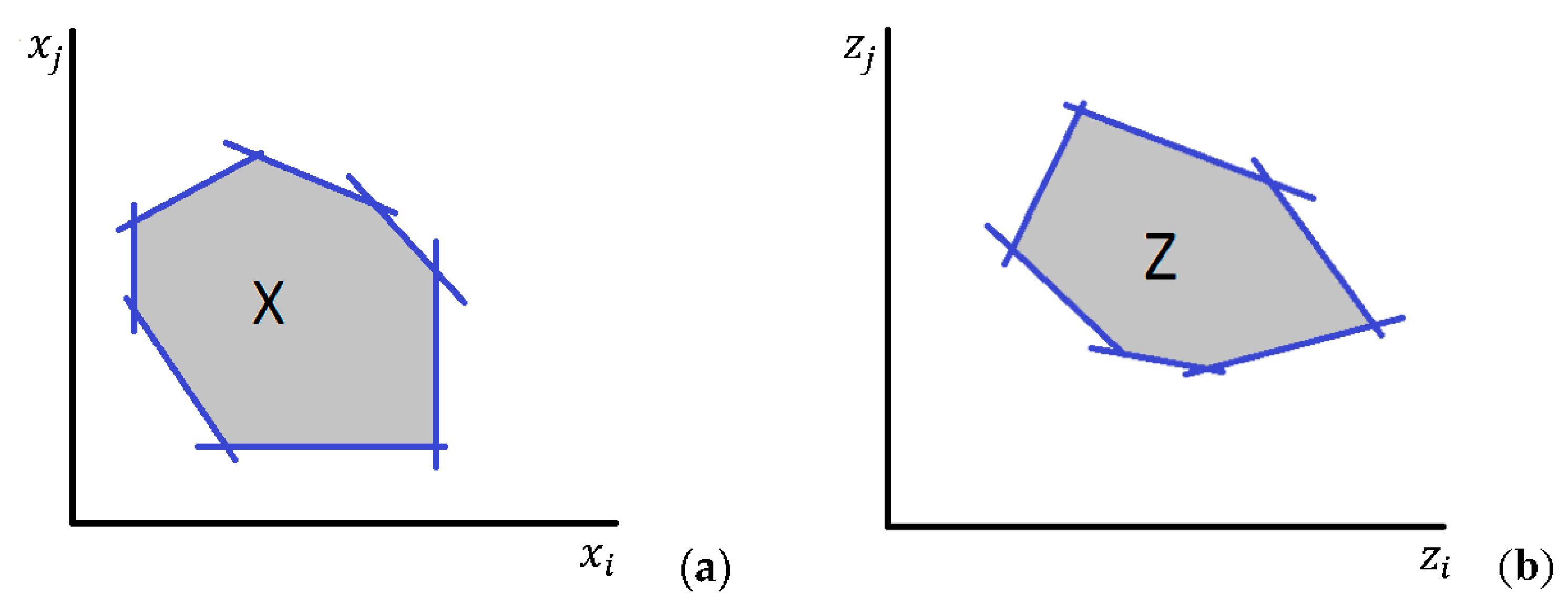
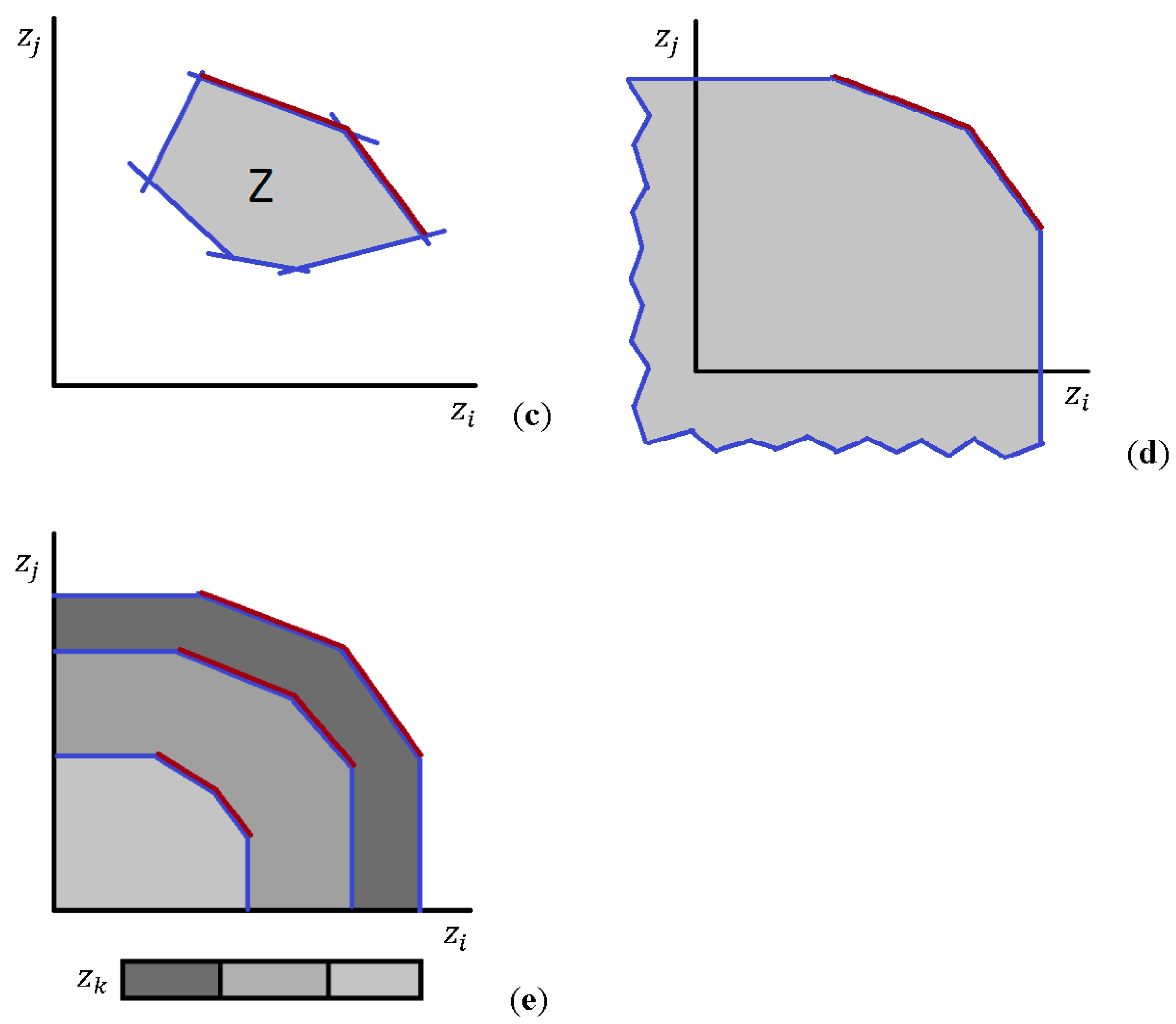
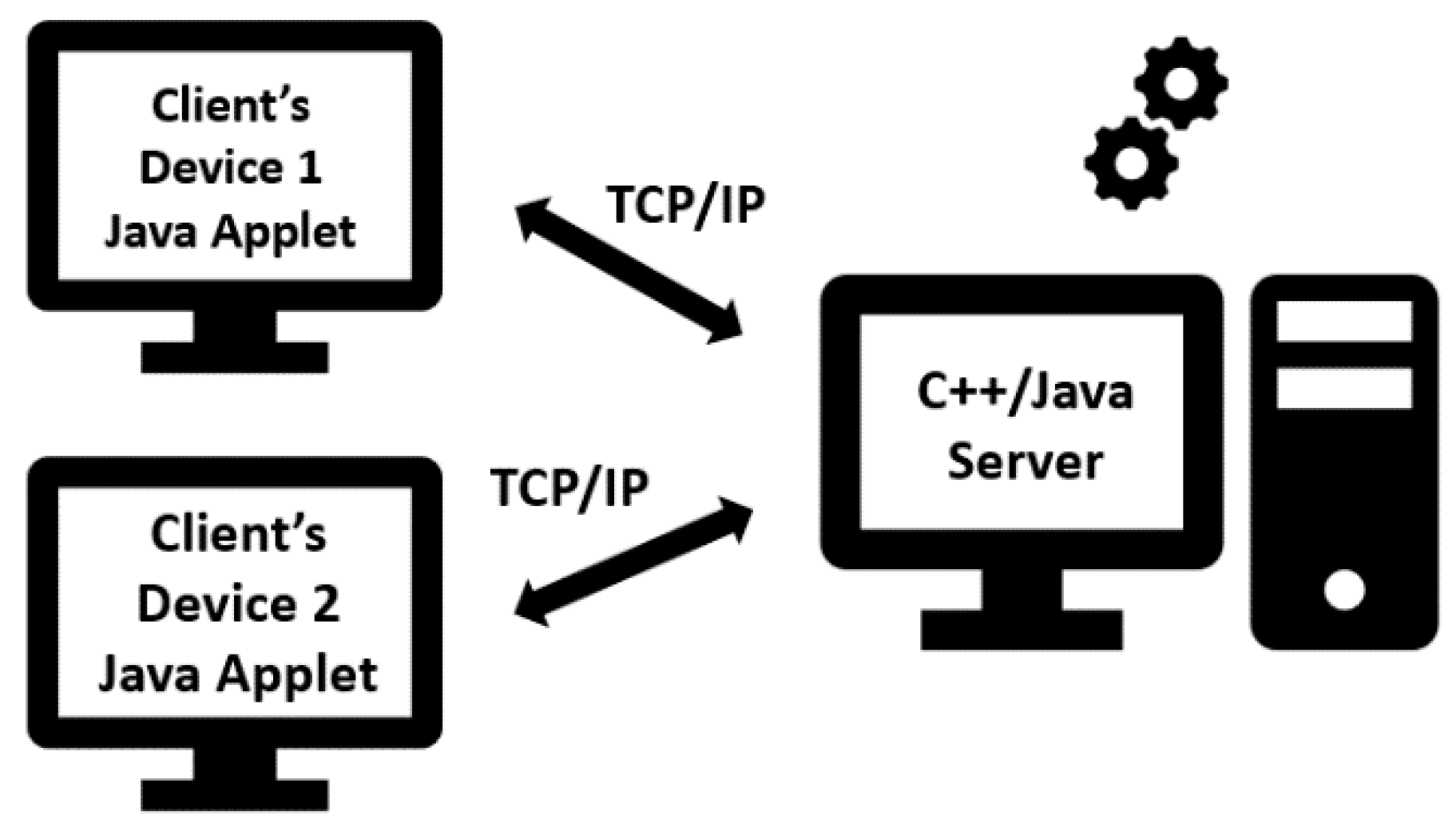
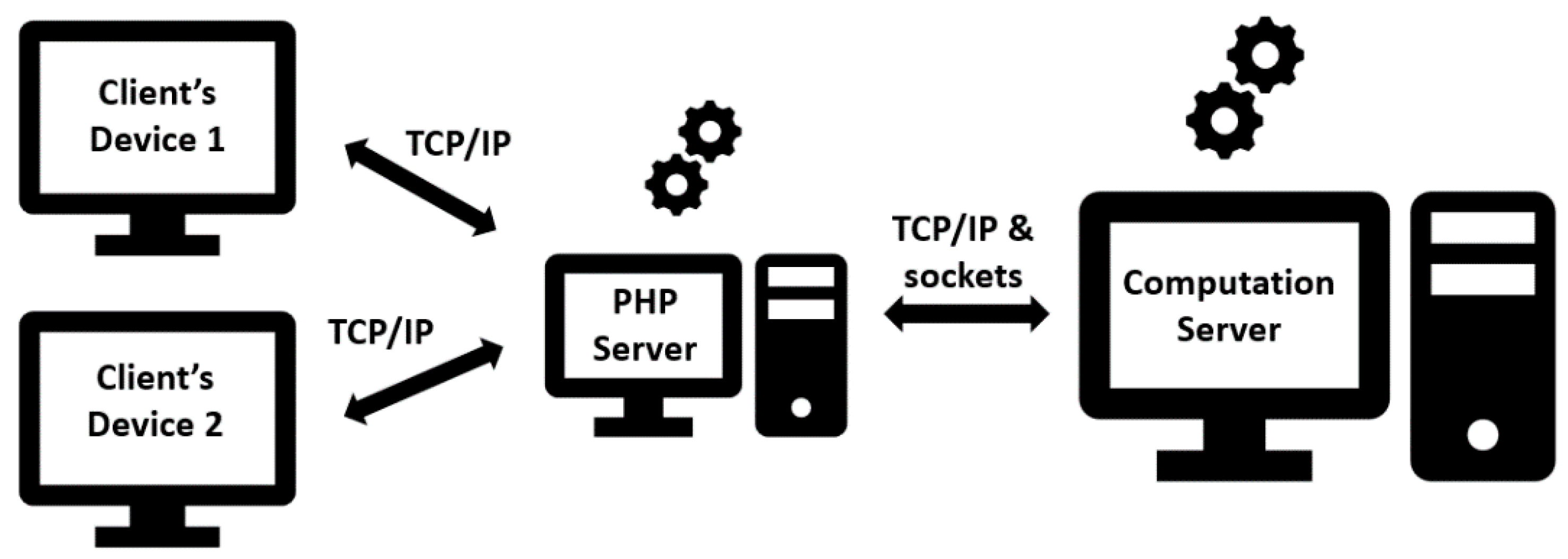
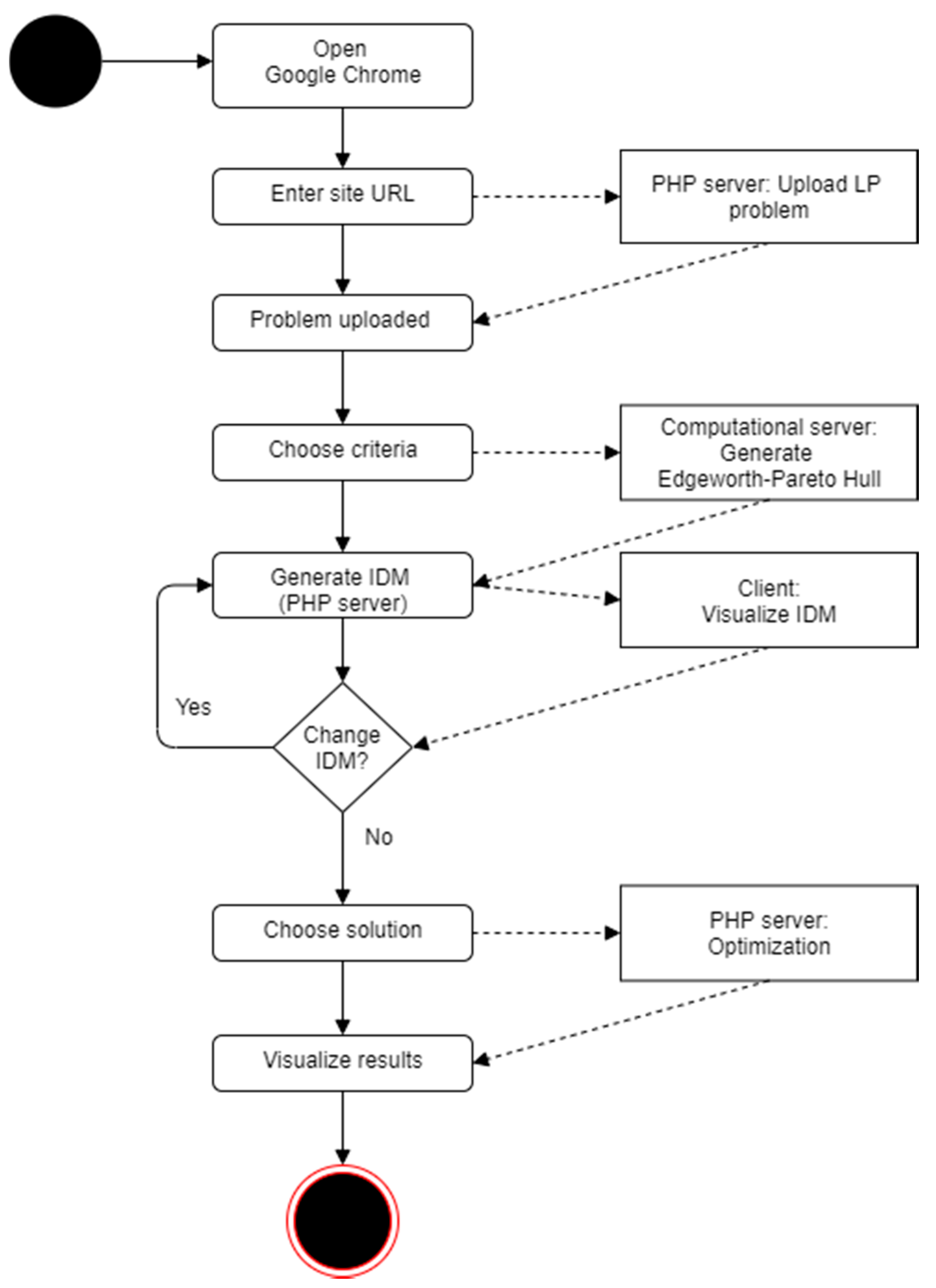

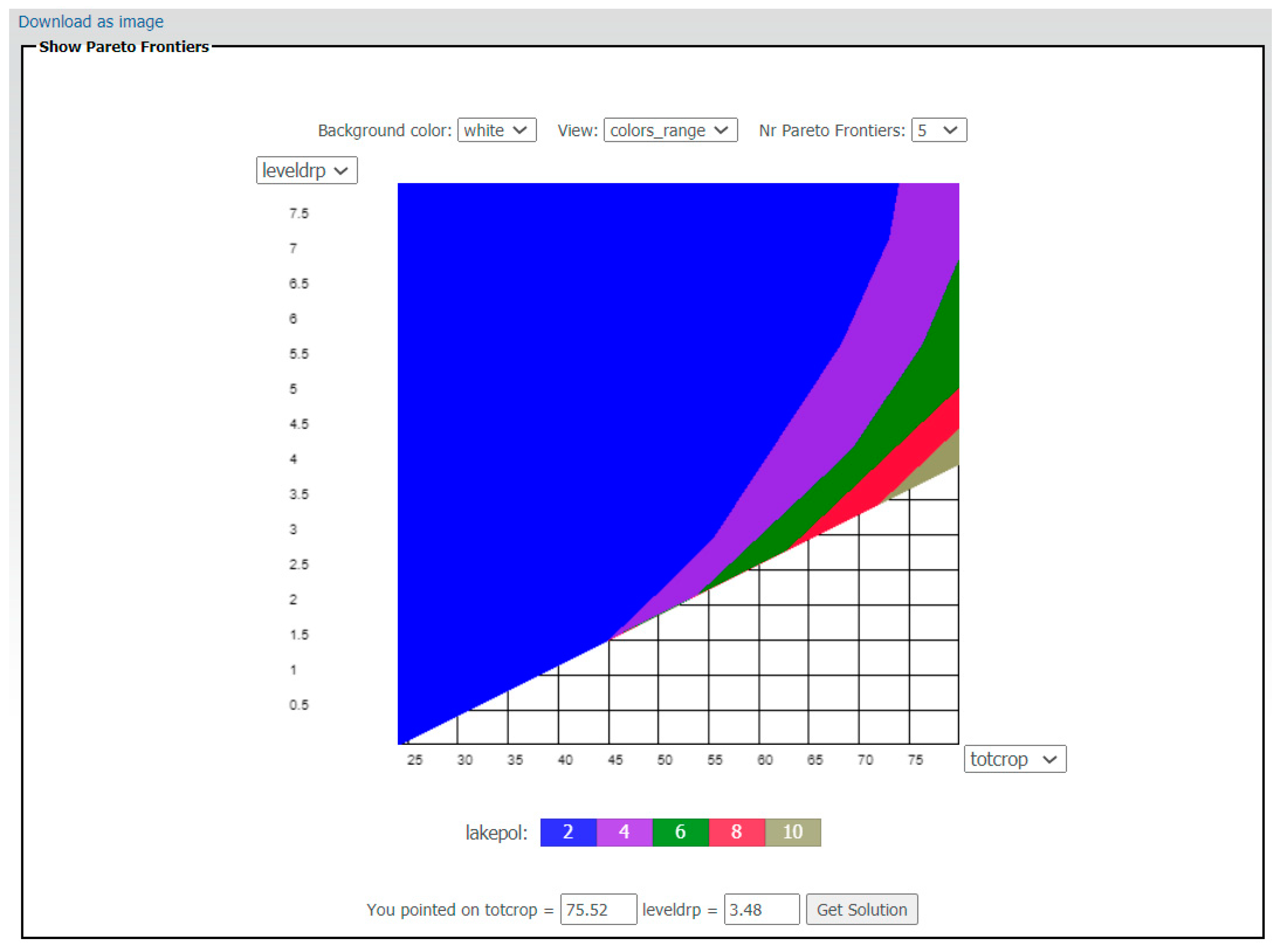
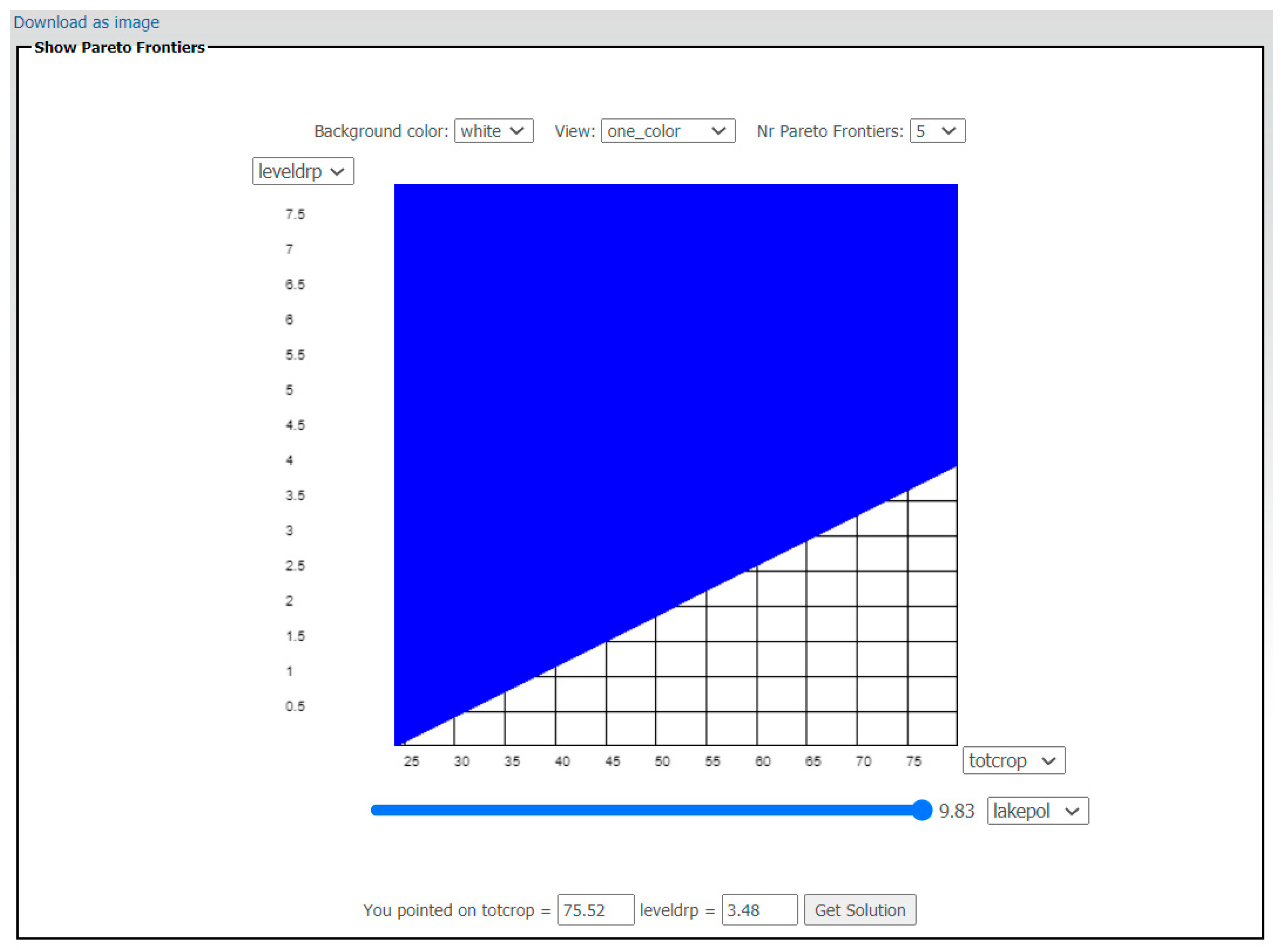

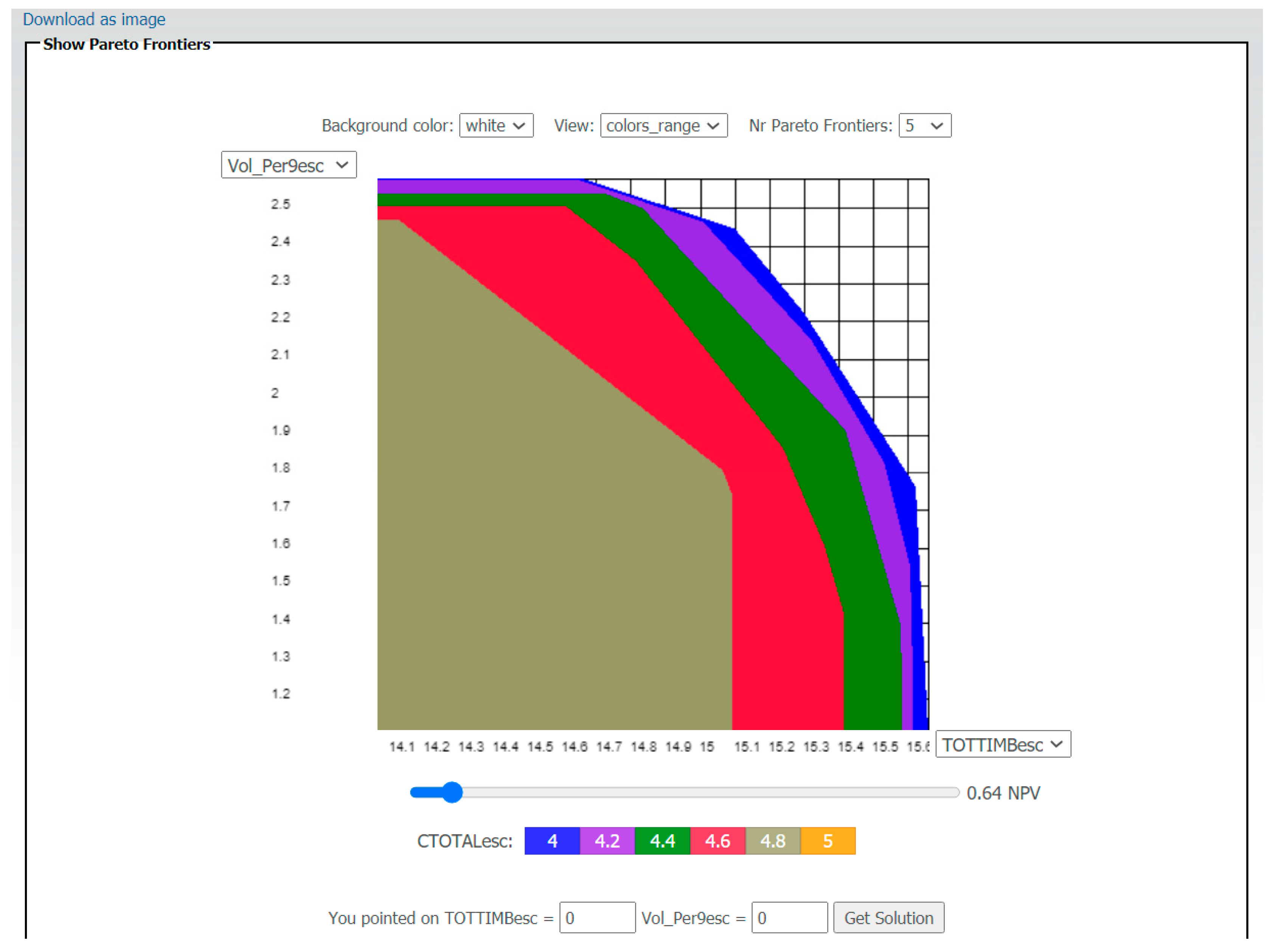
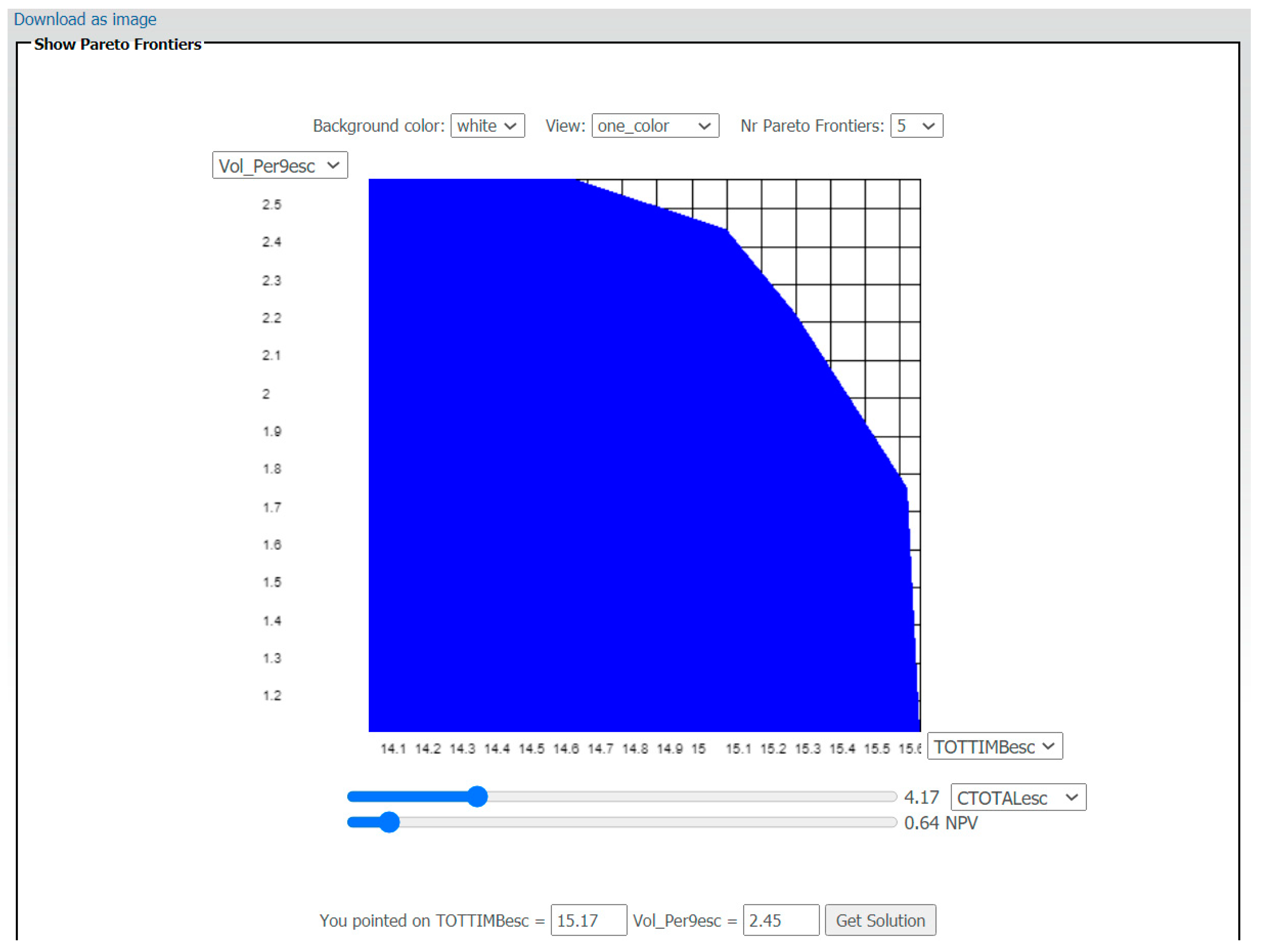
Publisher’s Note: MDPI stays neutral with regard to jurisdictional claims in published maps and institutional affiliations. |
© 2020 by the authors. Licensee MDPI, Basel, Switzerland. This article is an open access article distributed under the terms and conditions of the Creative Commons Attribution (CC BY) license (http://creativecommons.org/licenses/by/4.0/).
Share and Cite
Marto, M.; Bushenkov, V.A.; Reynolds, K.M.; Borges, J.G.; Marques, S. A Web-Based Approach for Visualizing Interactive Decision Maps. Information 2021, 12, 9. https://doi.org/10.3390/info12010009
Marto M, Bushenkov VA, Reynolds KM, Borges JG, Marques S. A Web-Based Approach for Visualizing Interactive Decision Maps. Information. 2021; 12(1):9. https://doi.org/10.3390/info12010009
Chicago/Turabian StyleMarto, Marco, Vladimir A. Bushenkov, Keith M. Reynolds, José G. Borges, and Susete Marques. 2021. "A Web-Based Approach for Visualizing Interactive Decision Maps" Information 12, no. 1: 9. https://doi.org/10.3390/info12010009
APA StyleMarto, M., Bushenkov, V. A., Reynolds, K. M., Borges, J. G., & Marques, S. (2021). A Web-Based Approach for Visualizing Interactive Decision Maps. Information, 12(1), 9. https://doi.org/10.3390/info12010009








